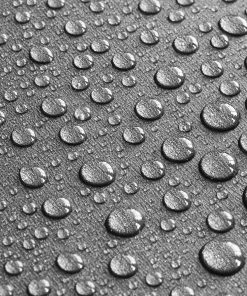No products in the cart.
Miller-Stephenson Articles
Mold Release Application Guide – Troubleshooting Guide – ReleaSys™
Mold Release Application Guide – ReleaSys™
Miller-Stephenson has generated a mold release application guide to help aid customers with the proper surface preparation and application of its new semi-permanent release agents. Semi-permanent mold release agents are state of the art release agent systems designed to provide superior durability, maximal number of releases per application, and minimal de-molding force. Miller-Stephenson has been at the forefront of developing the most advance release agents for the molding industry. Our exclusive ReleaSys Semi-Permanent release agents represent the most technological advanced and refined release system available on the market. ReleaSys release agents provide greater operational efficiency by bonding to mold surfaces, creating a durable layer that is resistant to both chemical and mechanical attack. These products are offered in both low-odor, non-flammable solvent-based or water-based formulations. Our product line offers the following benefits:
- Very low transfer (contamination) to the molded part
- Excels at releasing difficult substrates from complex mold geometries
- High suitability for rubber-to-metal bonding
- Low levels of in-mold build-up/fouling
- Promotion of substrate flow (Rubber, Epoxy, Polyurethane, etc)
- Extremely high release-ease
- Many releases (high durability) between applications
- Various slip levels
- Superb release for all polymer types
- Applicability for all molding processes
While semi-permanent mold release agents offer superior performance and efficiency, their surface preparation and application technique have greater requirements. Failure to follow the correct method of preparation and application has a more dramatic effect on performance than other conventional release agents. Therefore proper training and guidance is critical to maximize the effectiveness, to this end Miller-Stephenson has generated a comprehensive mold release application guide and Troubleshooting common molding issues guide to help aid our customers in applying ReleaSys.
Surface-Preparation
Semi-permanent mold release agents require specific preparation of the molding surface in order to maximize surface adhesion, durability, and minimize transfer. The molds must be thoroughly cleaned, removal of all previous mold release agents or contaminates are critical before application of ReleaSys. Prior to initial application of ReleaSys, Miller-Stephenson recommends mechanical cleaning with media blasting followed by cleaning with a good general purpose solvent or high-pH cleaning solution. Older molds that have significant buildup and/ or molds that have been coated with waxes, oils, etc should be cleaned with a heavy duty cleaner solvent like Miller-Stephenson’s MS-557 or MS-552. A good test is to use masking tape and test for surface adhesion, if the tape adheres to the mold surface than typically your cleaning has been successful.
Application to Mold Surface
Miller-Stephenson’s ReleaSys semi-permanents can be applied by three standard methods: hand-wiping, aerosolization via HVLP gun or aerosolization within a can. Miller-Stephenson strongly recommends application via aerosolization. Aerosolization minimizes over-application and facilitates the development of a uniform, thin film on the molding surface. Miller-Stephenson offers aerosolized cans of its ReleaSys product line (ie: ReleaSys 82, 85, 88, and 89) which have been optimized to deliver consistent application and coverage. Our aerosol cans use a 100% nonflammable, quick drying, and low odor formulation which enables applicators to have greater safety and lower exposure. Follow Mold Release Application Guidelines when applying ReleaSys:
- Gentle agitate ReleaSys, avoiding high shear / high rpm mixing if using bulk and excessive shaking of the aerosol can. Set the HVLP gun to appropriate pressure; a typically starting pressure is >40 psi in the airline, 8-10 psi at the gun, and ~2-4 psi at the outlet. Nozzle sizes can vary between 0.6 mm to 1.0 mm. Spray 8-12 inches from the surface with approximately 50% overlap.
- When using solvent-based ReleaSys allow 2-3 minutes between coats and 15-20 minutes after the final coat to allow for a full cure at room temperature. Miler-Stephenson recommends 2-3 coats to maximize durability and number or releases. Final cure times can be reduced at elevated temperatures. Water-based formulation should be applied to a hot mold (>90 C) with 2-3 light coats followed by a brief cure time (1-3 minutes at > 90 C). Regardless of applications method or carrier solvent, ReleaSys must be applied to the mold surface as a “wet film or wet coat” and allowed to dry on the surface, failure to do so will dramatically effect performance.
- NOTE: Cure time refers to the time required for the polymeric release agent to sufficiently cross-link and adhere to the mold surface. Allowing proper time for cross-linking is critical to performance, this process can be accelerated as a function of increased temperature. Typically a single heat cycle of the mold is a sufficient means of acceleration.
Re-application
- When release becomes hesitant, immediately reapply one coat of ReleaSys™ in the same manner as described previously. Spot touch-ups can also be done on known high wear or geometrically strained areas.
- When molding, it is common for operators to use an HVLP gun to spray the entire mold and apply touch-up coats with the aerosol can. The aerosol can allows for lighter spray volumes and uniform coverage, particularly in areas that are prone to de-molding issues.
For further assistance please contact our Technical Service Department. Miller-Stephenson’s Mold Release Application Guide was designed to set general guidelines for applicators and molders to follow. Each molding operation is different and modifications to the above mentioned process is likely given the diversity and specialization within this field. Please see our Troubleshooting guide below if your are experiencing any issues using our ReleaSys product line.
Troubleshooting Common Molding Issues
| Problem | Cause | Solution |
| Complete failure to obtain release | ›Improperly cured ReleaSys | • Mechanical clean mold followed by chemical cleaning; reapply ReleaSys |
| › Mold insufficiently cleaned prior to application preventing ReleaSys from bonding | • Thoroughly clean mold with bead blasting followed by cleaning with a solvent or high pH detergent. Reapply ReleaSys. | |
| › Phase-separation of ReleaSys as a result of over agitation or mixing | • Examine ReleaSys; If separation occurred replace with fresh material | |
| Poor Release in strained molding areas | › Lack of slip due to mold geometry application angle | • Apply one or two extra coats of ReleaSys initially; Re-apply touch-up coats to these areas more frequently |
| Good release but build-up of ReleaSys on mold surface. | › Over-application of ReleaSys | • Thoroughly clean mold and re-apply ReleaSys in lighter coats; Adjust spray gun to dispense lower volume |
| Good release but parts exhibit blemishes or oily patches | › Over-application of ReleaSys | • Thoroughly clean mold and re-apply ReleaSys in lighter coats; Adjust spray gun to dispense lower volume |
| › Insufficient cure time | • Apply lighter coats of ReleaSys and increase cure time allowed and/or increase cure temperature | |
| Inability to achieve multiple releases | › Micro-porosity present in mold | • Clean mold; apply 4-5 coats of ReleaSys to seal mold surface allow for extended cure times on the first 2 coats. |
| › Mold insufficiently cleaned prior to application preventing ReleaSys from bonding | • Mechanical clean mold followed by chemical cleaning; reapply ReleaSys | |
| › Improper application; non-uniform coverage | • Clean mold; apply light coats of ReleaSys with 50% overlapp between passes. | |
| Poor release and/or small particles of molding material left on mold surface. | › Micro-porosity present in mold | • Clean mold; apply 4-5 coats of ReleaSys to seal mold surface allow for extended cure times on the first 2 coats. |
Technical or Application Support:
- To learn more about our mold release agents please click here.
- Click here for information, Which mold release agent is right for you
- If you require any further technical or application support please contact our technical staff
- Mold Release Application Guide
Notwithstanding any express or implied indication to the contrary, product information provided on or via this website is supplied upon the condition that the persons receiving such information will make their own, independent determination as to a given product’s suitability for any contemplated purposes prior to use. In no event will Miller-Stephenson be responsible for damages of any nature whatsoever resulting from the use of, or reliance upon, information provided, directly or indirectly, on this website in relation to any product and/or application.



